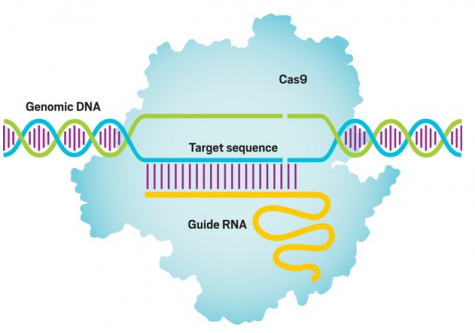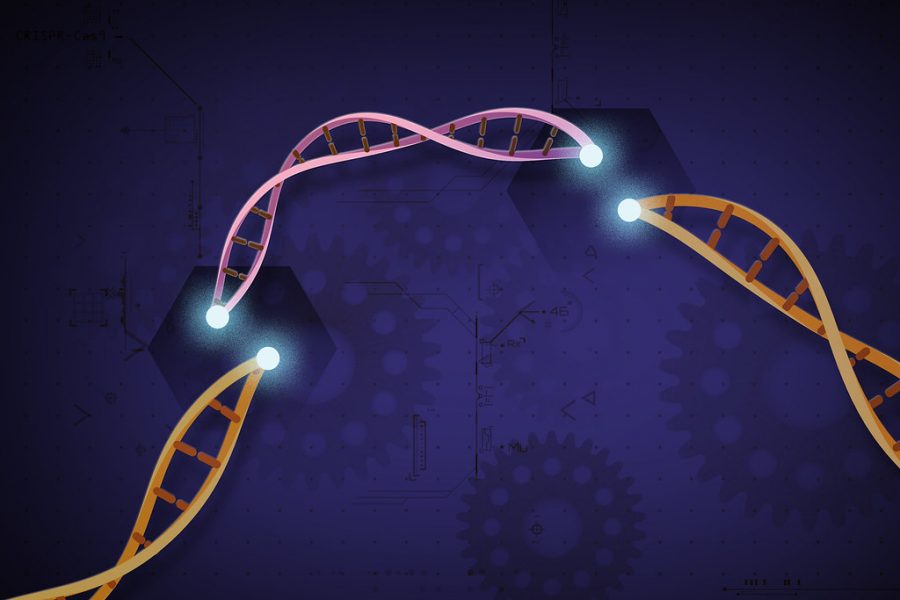2020 Nobel Prize in Chemistry
The CRISPR-Cas9 Genetic Scissors
On October 7, 2020, Emmanuelle Charpentier and Jennifer A. Doudna were awarded the Nobel Prize in Chemistry for their discovery of the CRISPR-Cas9, simply called CRISPR, genetic scissors. CRISPR is a gene-editing tool that can cut any strand of DNA that a scientist desires. Since the first time it has been developed and used, eight years ago, scientists have not been disappointed. Many have published studies showing that the tool can alter DNA in any organism, allowing many discoveries and advancements in the biomedical field including new cancer therapies.
Definitions
Cas9 – an enzyme and its main function is to cut DNA and thereby alter a cell’s genome
CRISPR – family of DNA sequences found in the genomes of prokaryotic organisms such as bacteria and archaea
tracrRNA – trans-activating CRISPR RNA (acronym), a small trans-encoded RNA
The Discovery
In 2011, Charpentier and Doudna began working together. They met at a cafe in Peurto Rico, where Charpentier proposed the idea of a collaboration. Both of them were intrigued by an unrecognized bacterial immune system that uses Cas9 to split genes of an invading virus. The image below shows Charpentier’s work of how bacterial RNA runs this relatively simple process: “CRISPR gene editing uses a synthetic guide RNA, which is complementary to a target DNA sequence, to direct Cas9 to a specific location for cutting. Some applications require an additional DNA template (not shown) to fill in the cut.”

When they began, they had the hypothesis that CRISPR-RNA is essential to find a virus’s DNA, with the help of Cas9 cutting off the DNA molecule. Unfortunately, after many tries and failed attempts and reviewing everything the scientists decided to add tracrRNA, an enzyme that aids in genome editing, into their experiments. What they saw was outstanding. Once the tracrRNA was added, the Cas9 scissors had access to the enzyme and in turn, the DNA was split into two parts.
Use of CRISPR
CRISPR is every biologist’s dream. It is cheap, accessible, simple, and quick especially compared to previous gene-editing tools. And it is not only used in one specific field. CRISPR has been started to be used in research for medicine and even agriculture. They have become prominent in plant breeding, as before when altering a genome of a plant, antibiotic resistance genes were added to it. This increased the risk of surrounding organisms receiving these antibiotic resistance genes. Thanks to CRISPR, that is not worrisome anymore. Researchers can make precise adjustments to the genome with no side effects.
Scientists are stating CRISPR is being tested for the treatment and cure of rare genetic diseases and cancer. They also are already performing clinical trials to investigate the use of these genetic scissors in sickle cell anemia, beta-thalassemia, and eye inherited diseases. There are many ethical issues in the use of CRISPR. It has been used in modifying embryos which leads to questioning in the laws and regulations of genetic engineering. As an article from nobelprize.org states, “… prohibitions on modifying the human genome in a way that allows the changes to be inherited.” Therefore, there are some limitations to where and how CRISPR is used.
CRISPR-Cas9 genetic scissors are a blessing to the field of science. It will provide numerous discoveries towards many challenges facing humanity. Emmanuelle Charpentier and Jennifer Doudna deserve this Nobel Prize in Chemistry and more.


